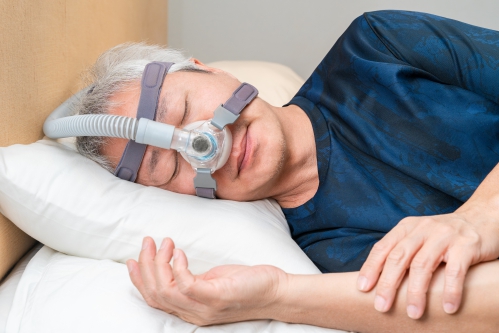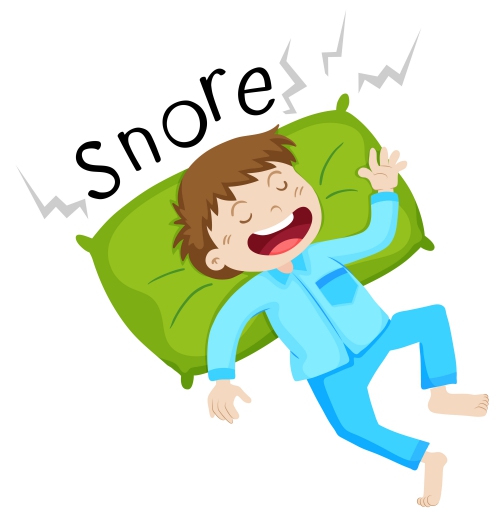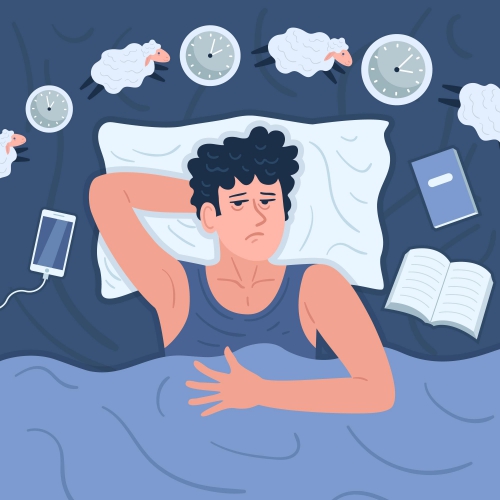What is Obstructive sleep Apnea?
Obstructive Sleep Apnea (OSA) is a sleep disorder involving intermittent arrest or pauses in breathing followed by subsequent resumption in breathing. The pauses (apneas) may be significantly long enough to cut oxygen supply to your body and decrease the removal of carbon dioxide. When this happens, your brain responds by briefly waking up in order to open the airways and resume breathing. This results in a fragmented sleep which most often is not even noticed. The apneas can occur hundreds of times during the night. Hence, your brain is not rested enough and you feel tired during the day despite having a “good night of sleep”.
OSA is a common disorder which is however mostly under-recognized and under-diagnosed. It is becoming more common in both adults and children in our modern society. It is more common among men compared to women. It is also 2-3 times more common in people aged greater than 65 years.
The treatment of the disorder will depend on the severity of the condition. These involve mechanical, pharmacological and surgical measures. It is very important to identify OSA as it can be the presentation for or associated with a more complicated underlying medical problem.
Causes of OSA
OSA is due to the collapse or obstruction of upper airways during sleep. This is due to a derangement in the pressures responsible to maintain the airway patent. Obstructions are most commonly at the level of the soft palate or the tongue. Therefore there are several structural factors that may cause OSA including:

- Enlarged tonsils which are glands located at the back of your throat
- Increased volume of the tongue
- Abnormal positioning of your jaw
- Decreased in neurologic control of the airway
- Nasal polyps
- Tumours in the throat
Risk factors of OSA
Besides structural abnormalities of the upper airway, there are other non-structural factors that can increase the risk of having OSA including:
- Obesity
- Excess abdominal fat
- Being a male
- Increased age
- Being postmenopausal
- Drinking alcohol
- Using sedatives
- Smoking
- Sleeping on your back
- Having a family history of OSA
- Having other medical conditions such as hypothyroidism, stroke or other neurologic disorders
Signs and Symptoms
The symptoms of OSA begin to appear gradually. Symptoms occurring at night may include:
- Loud snoring which is bothersome to others (most commonly reported by partner)
- Partner witnessing periods of apneas which interrupts the snoring and end with a loud gasp or snort
- Gasping for air or choking sensations that may awaken the person from his/her sleep
- Increased frequency of urination
- Restless sleep with frequent tossing or turning around throughout the night


Some symptoms are commonly experienced during the day and these include:
- Waking up as tired as when you went to bed
- Waking up with a headache
- Increased tendency to fall asleep during daytime especially during quiet activities such as reading or watching television. Later as the disease progresses, sleepiness can also happen during activities that require alertness such as at school or at work.
- Fatigue
- Impaired memory or concentration
- Impaired vigilance
- Depression or anxiety
- Sexual dysfunction
- Increased blood pressure
The symptoms experienced can severely impair activities of daily living. Decreased intellectual capacity, memory and attention can impact performance professionally and socially.
Making a diagnosis
A good and detailed history can highly suggest the presence of OSA. Your doctor will also check your blood pressure and body mass index (BMI) to see if you are obese. He/she will also examine your throat to look for any potential causes of obstruction. There are no specific blood tests that are done to diagnosis the condition. However, other tests can help in making the diagnosis namely:
- Polysomnography: In this procedure, a special monitor is used to record several parameters during your sleep. These parameters include the activity of your heart, lung and brain as well as breathing patterns, levels of oxygen in your blood and movements of your limbs. It can be done only during part of the night or through the whole night.
- Home testing: In some cases, your doctor may ask you to use an at home version of polysomnography for at home monitoring.

Treatment of OSA
It is important to diagnose OSA the earlier possible in order to initiate treatment. The treatment depends on the severity of the condition. General and behavioural measures that are recommended include:
- Weight loss
- Avoid alcohol consumption for about 4-6 hours before going to bed
- Sleeping on your side instead of on your back or stomach
- Stop smoking
- Avoidance of sedatives
Besides, there are mechanical treatment options that may be used depending on each case, including:
- Nasal continuous positive airway pressure (CPAP): This is an apparatus used to deliver a positive pressure through your airways continuously to maintain the patency of your airway. It most commonly comes in the form of a mask that needs to be worn during sleep. It helps to eliminate frequent arousals that lead to sleep deprivation. It is a very effective treatment for OSA, however, some people may find it uncomfortable to sleep with. Your doctor will explain to you how to set up your machine and you will have to learn how to adjust your mask to minimise leakage. The settings that will be used on your CPAP machine will depend on the severity of your condition. If you feel that you are having problems to use the machine, do not stop using it as your doctor may see if there are adjustments that can be done to improve your comfort.
- Bi-level positive airway pressure (BiPAP): In this type of positive airway pressure, the pressure delivered during inspiration and expiration can be adjusted independently. The pressure delivered in BiPAP is lower compared to that in CPAP. Thus, it is usually preferred in people who cannot tolerate the high pressure delivered through CPAP.
- Oral devices: These are devices that are used to pull the tongue forward, hence decreasing the risk of obstruction by the tongue, or to move your jaw forward, enlarging the space in your throat. They work by enlarging and opening the upper airway.


If none of the above improve OSA, surgical procedures may be considered. The chosen procedure will depend on the anatomical structures and abnormalities present. The procedures include:
- Uvulopalatopharyngoplasty: This is the most common surgical procedure done in adults with OSA in whom mechanical therapies have failed. In this procedure, the tonsils, uvula (which is a fleshy hanging structure at the back of the throat), the posterior part of the soft palate and some tissue in your throat are removed. This enables enlargement of the upper airway and decreased risk of obstruction. However, some complications may arise from this surgical procedure such as change in voice, painful swallowing, excessive bleeding or change in taste.
- Maxillomandibular advancement: In this surgical procedure, your upper and lower jaw is brought forward hence enlarging the space at the back of your throat decreasing the risk of obstruction.
- Tracheostomy: This is procedure mostly used in severe forms of OSA as it bypasses the upper airway and it is virtually 100% effective. This involves surgically creating an opening in your neck and inserting a tube into that opening through which you will breathe.

Complications
It is important to properly diagnose and treat OSA due to the variety of complications that may arise from the condition. These include:
- Excessive daytime sleepiness: You can find yourself falling asleep anytime and anywhere. This can negatively impact your work and performance. It can also be very dangerous if it happens when you are driving as it can lead to road accidents.
- Cardiovascular problems: The variations in the levels of oxygen in your blood during the night in combination with the sudden awakenings with choking sensations can increase your likelihood to have heart diseases. These include heart attack, heart failure and stroke. Hypertension is also a common complication of OSA.
- Disrupted relationships: Loud snoring can highly disturb partners and prevent them from sleeping. This can lead to relationship problems with the partner choosing to sleep in a separate room.
- Complications from surgeries: The surgical treatment of OSA may be accompanied by complications such as change in voice, swallowing difficulties and bleeding.
Prognosis
If CPAP is used regularly and properly, the short term prognosis is good. It is also very important to implement lifestyle changes, such as weight loss, limiting alcohol intake and smoking cessation, along with mechanical therapy in order to improve prognosis.

Source:
- Medscape. 2020. Obstructive Sleep Apnea (OSA).
- World Health Organization. 2020. Obstructive sleep apnoea syndrome.
- UpToDate. 2020. Clinical presentation and diagnosis of obstructive sleep apnea in adults.






